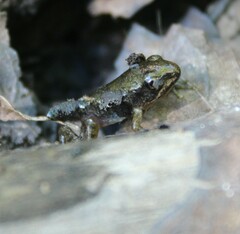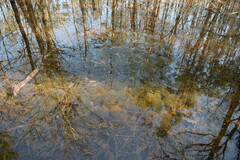©alexegreen, some rights reserved (CC-BY-NC)
©Bob, some rights reserved (CC-BY-NC)
©Anthony Brais, some rights reserved (CC-BY-NC)
©Anthony Brais, some rights reserved (CC-BY-NC)
©Anthony Brais, some rights reserved (CC-BY-NC)
©jtinney, some rights reserved (CC-BY-NC)
©Jukka Jantunen, some rights reserved (CC-BY-NC)
©GA Engineer, some rights reserved (CC-BY-NC)
©Jonah Levy, some rights reserved (CC-BY-NC)
©Jonah Levy, some rights reserved (CC-BY-NC)
©Jonah Levy, some rights reserved (CC-BY-NC)
©Jonah Levy, some rights reserved (CC-BY-NC)
©ssmyers, some rights reserved (CC-BY-NC)
©ssmyers, some rights reserved (CC-BY-NC)
©Andrew Lewis, some rights reserved (CC-BY)
©Andrew Lewis, some rights reserved (CC-BY)
©Andrew Lewis, some rights reserved (CC-BY)
©Andrew Lewis, some rights reserved (CC-BY)
©mm456, some rights reserved (CC-BY-NC)
©Ron Wertz, some rights reserved (CC-BY-NC-SA)
©Ron Wertz, some rights reserved (CC-BY-NC-SA)
©makayla7142, some rights reserved (CC-BY-NC)
©Jacques Ranger, some rights reserved (CC-BY-NC)
©Jacques Ranger, some rights reserved (CC-BY-NC)
©Jacques Ranger, some rights reserved (CC-BY-NC)
©Pete Zani, some rights reserved (CC-BY-NC)
©Jay Heiser, some rights reserved (CC-BY-NC)
©Jay Heiser, some rights reserved (CC-BY-NC)
©Jay Heiser, some rights reserved (CC-BY-NC)
©DW, some rights reserved (CC-BY-NC)
©DW, some rights reserved (CC-BY-NC)
©DW, some rights reserved (CC-BY-NC)
©DW, some rights reserved (CC-BY-NC)
©LJEnterprises, some rights reserved (CC-BY-NC)
©LJEnterprises, some rights reserved (CC-BY-NC)
©wwmartiniv, some rights reserved (CC-BY-NC)
©wwmartiniv, some rights reserved (CC-BY-NC)
©cole_guarneri, some rights reserved (CC-BY-NC)
©cole_guarneri, some rights reserved (CC-BY-NC)
©Anthony Brais, some rights reserved (CC-BY-NC)
©Anthony Brais, some rights reserved (CC-BY-NC)
©Anthony Brais, some rights reserved (CC-BY-NC)
©Anthony Brais, some rights reserved (CC-BY-NC)
©Anthony Brais, some rights reserved (CC-BY-NC)
©Anthony Brais, some rights reserved (CC-BY-NC)
©Anthony Brais, some rights reserved (CC-BY-NC)
©Anthony Brais, some rights reserved (CC-BY-NC)
©Anthony Brais, some rights reserved (CC-BY-NC)
©Anthony Brais, some rights reserved (CC-BY-NC)
©Anthony Brais, some rights reserved (CC-BY-NC)
©Anthony Brais, some rights reserved (CC-BY-NC)
©Anthony Brais, some rights reserved (CC-BY-NC)
©Nick Cairns, some rights reserved (CC-BY-NC)
©David Weisenbeck, some rights reserved (CC-BY)
©David Weisenbeck, some rights reserved (CC-BY)
©Allison Burnett, some rights reserved (CC-BY-NC)
©Clayton Koonce, some rights reserved (CC-BY-NC)
©Clayton Koonce, some rights reserved (CC-BY-NC)
©Clayton Koonce, some rights reserved (CC-BY-NC)
©Clayton Koonce, some rights reserved (CC-BY-NC)
©meghanmurphy, some rights reserved (CC-BY-NC)
©birdnerd67, some rights reserved (CC-BY-NC)
©edenea, some rights reserved (CC-BY-NC)
©Fred Gibbs, some rights reserved (CC-BY-NC)
©Fred Gibbs, some rights reserved (CC-BY-NC)
©Fred Gibbs, some rights reserved (CC-BY-NC)
©Dave Woehr, some rights reserved (CC-BY-NC)
©jolie_ofthewoods, some rights reserved (CC-BY-NC)
©jolie_ofthewoods, some rights reserved (CC-BY-NC)
©Ron Wertz, some rights reserved (CC-BY-NC-SA)
©Ron Wertz, some rights reserved (CC-BY-NC-SA)
©Ron Wertz, some rights reserved (CC-BY-NC-SA)
©Ron Wertz, some rights reserved (CC-BY-NC-SA)
©Ron Wertz, some rights reserved (CC-BY-NC-SA)
©Ron Wertz, some rights reserved (CC-BY-NC-SA)
©cwalters, some rights reserved (CC-BY-NC)
©Carrie Seltzer, some rights reserved (CC-BY-NC)
©Carrie Seltzer, some rights reserved (CC-BY-NC)
©Carrie Seltzer, some rights reserved (CC-BY-NC)
©Carrie Seltzer, some rights reserved (CC-BY-NC)
©Carrie Seltzer, some rights reserved (CC-BY-NC)
©muehlbem, some rights reserved (CC-BY-NC)
©bmeigs, some rights reserved (CC-BY-NC)
©otyokwa, some rights reserved (CC-BY-NC)
©Jacob Malcom, some rights reserved (CC-BY-SA)
©Bill stitt, some rights reserved (CC-BY-NC)
©Nicole Humphrey, some rights reserved (CC-BY-NC)
©Erika Mitchell, some rights reserved (CC-BY-NC)
©brimagner, some rights reserved (CC-BY-NC)
©brimagner, some rights reserved (CC-BY-NC)
©brimagner, some rights reserved (CC-BY-NC)
©johnpand, some rights reserved (CC-BY-NC)
©johnpand, some rights reserved (CC-BY-NC)
©Joe Walewski, some rights reserved (CC-BY-NC)
©Wayne G Hildebrand, some rights reserved (CC-BY-NC)
©Wayne G Hildebrand, some rights reserved (CC-BY-NC)
©Wayne G Hildebrand, some rights reserved (CC-BY-NC)
©Jacob Malcom, some rights reserved (CC-BY-SA)
©hobiecat, some rights reserved (CC-BY-NC)
©Rob Speiden, some rights reserved (CC-BY-NC)
©Rob Speiden, some rights reserved (CC-BY-NC)
©johnpand, some rights reserved (CC-BY-NC)
©crayshack, some rights reserved (CC-BY-NC)
©Kent McFarland, some rights reserved (CC0)
©johnpand, some rights reserved (CC-BY-NC)
©Yves Bachand, some rights reserved (CC-BY-NC-ND)
©jwlowe, some rights reserved (CC-BY-NC)
©jwlowe, some rights reserved (CC-BY-NC)
©Charleen, some rights reserved (CC-BY-NC-SA)
©Liza Morse, some rights reserved (CC-BY-NC)
©Liza Morse, some rights reserved (CC-BY-NC)
©whichchick, some rights reserved (CC-BY)
©Geauga Park Naturalists, some rights reserved (CC-BY-NC)
©John G. Phillips, some rights reserved (CC-BY-NC)
©tdinovo, some rights reserved (CC-BY-NC)
©tdinovo, some rights reserved (CC-BY-NC)
©ecoexplore_wnc, some rights reserved (CC-BY-NC)
©Raymond Little, some rights reserved (CC-BY-NC)
©Raymond Little, some rights reserved (CC-BY-NC)
©Raymond Little, some rights reserved (CC-BY-NC)
©tdinovo, some rights reserved (CC-BY-NC)
©jackandshirley, some rights reserved (CC-BY-NC)
©Joe Brehm, some rights reserved (CC-BY-NC)
©tdinovo, some rights reserved (CC-BY-NC)
©tdinovo, some rights reserved (CC-BY-NC)
©matthew_wills, some rights reserved (CC-BY-NC)
©Joe Brehm, some rights reserved (CC-BY-NC)
©tori99, some rights reserved (CC-BY-NC)
©naturalistnat, some rights reserved (CC-BY-NC-ND)
©Anna Morris, some rights reserved (CC-BY-NC)
©laureldoc, some rights reserved (CC-BY-NC)
©Joe Brehm, some rights reserved (CC-BY-NC)
©Jean Taddie, some rights reserved (CC-BY-NC)
©Jean Taddie, some rights reserved (CC-BY-NC)
©Tigran Tadevosyan, some rights reserved (CC-BY)
©Tigran Tadevosyan, some rights reserved (CC-BY)
©Tigran Tadevosyan, some rights reserved (CC-BY)
©naturalistnat, some rights reserved (CC-BY-NC-ND)
©adam_nickey, some rights reserved (CC-BY-NC)
©ncolc, some rights reserved (CC-BY-NC)
©ncolc, some rights reserved (CC-BY-NC)
©johnpand, some rights reserved (CC-BY-NC)
©Colin Murray, some rights reserved (CC-BY-NC)
©johnpand, some rights reserved (CC-BY-NC)
©Mary Krieger, some rights reserved (CC-BY)
©rsealy, some rights reserved (CC-BY-NC)
©Erika Mitchell, some rights reserved (CC-BY-NC)
©Mary Krieger, some rights reserved (CC-BY)
©Jay Heiser, some rights reserved (CC-BY-NC)
©Mary Krieger, some rights reserved (CC-BY)
©Mary Krieger, some rights reserved (CC-BY)
©Jay Heiser, some rights reserved (CC-BY-NC)
©Jay Heiser, some rights reserved (CC-BY-NC)
©Summit Metro Parks, some rights reserved (CC-BY-NC)
©benjaminaube, some rights reserved (CC-BY-NC)
©rford1213, some rights reserved (CC-BY-NC)
©rford1213, some rights reserved (CC-BY-NC)
©Summit Metro Parks, some rights reserved (CC-BY-NC)
©Summit Metro Parks, some rights reserved (CC-BY-NC)
©christinebull, some rights reserved (CC-BY-NC)































































































































































